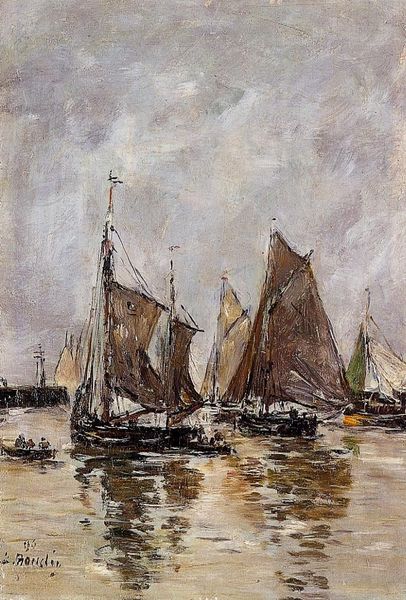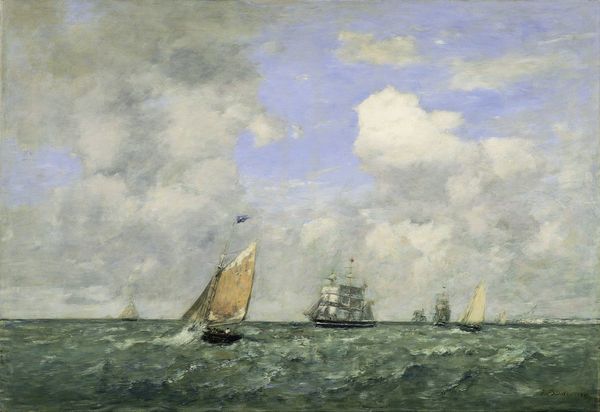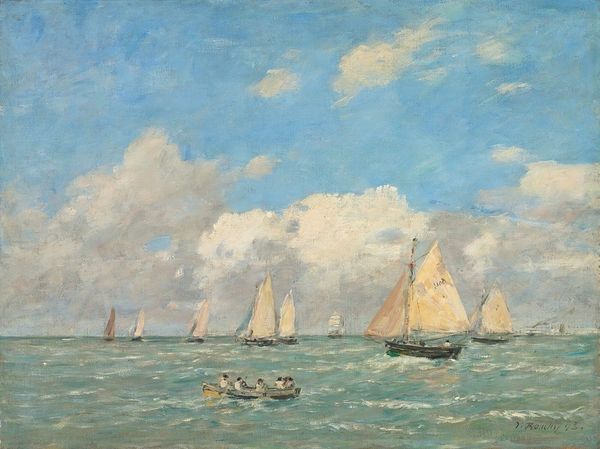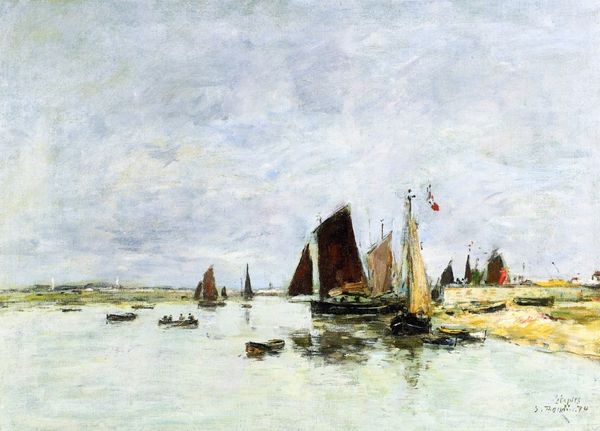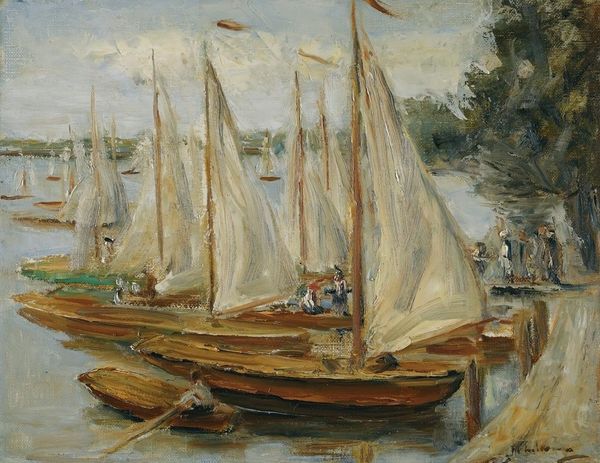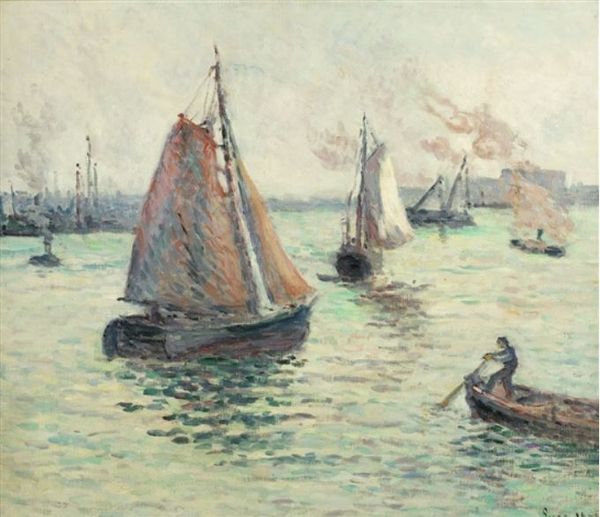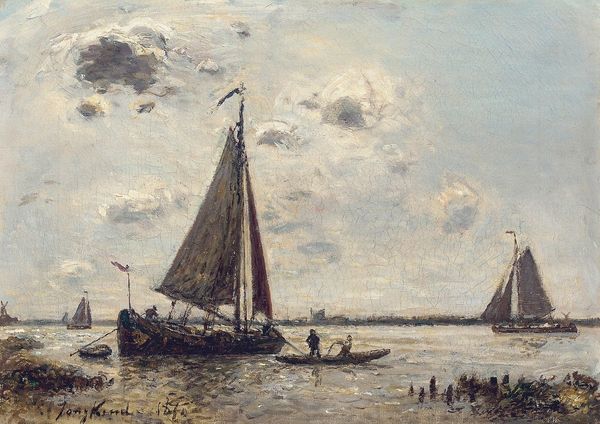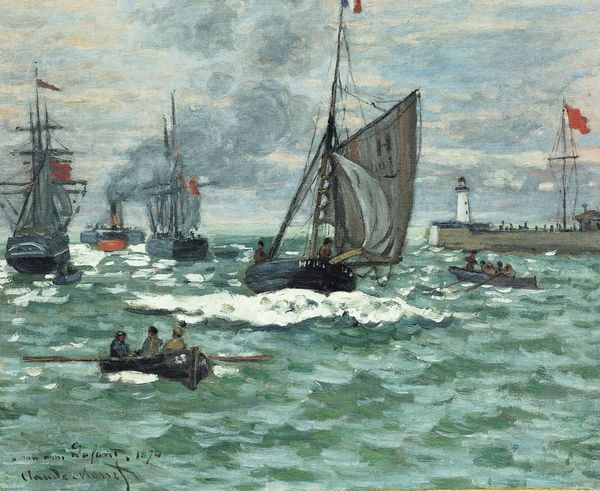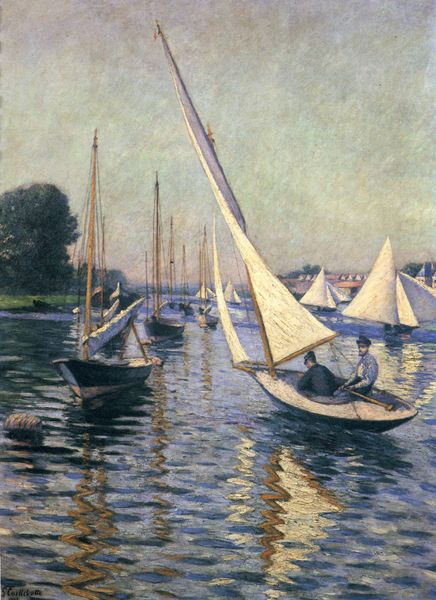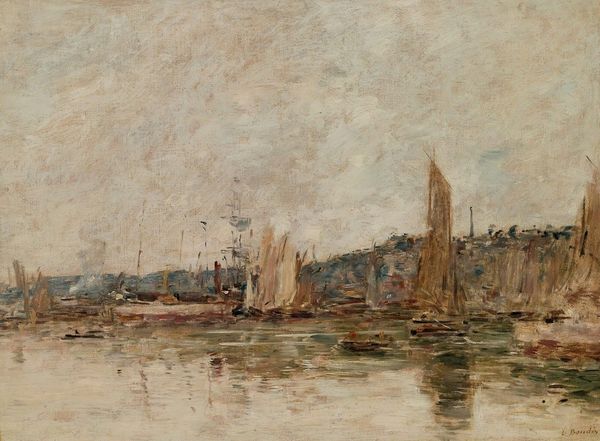
plein-air, oil-paint
#
impressionism
#
plein-air
#
oil-paint
#
landscape
#
oil painting
#
cityscape
Dimensions: 49 x 60 cm
Copyright: Public domain
Curator: Édouard Manet's 1872 oil on canvas, "View of Holland", presents a serene, albeit industrious, coastal vista. Currently, this example of Manet's experimentation resides at the Philadelphia Museum of Art. Editor: Oh, this evokes a quiet morning—misty, almost muted. The colors, mostly earth tones, feel very tactile. I can practically smell the salty air, can’t you? Curator: It's interesting that you immediately pick up on the sensory details. Manet did paint it *en plein air*, embracing the direct observation of the landscape. The rapid brushwork clearly aims to capture fleeting atmospheric conditions and the dynamism of labor across water. We have sails juxtaposed with windmills in the background; each relies on atmospheric conditions, for transport and manufacture respectively. Editor: Absolutely! I love the sketchiness, how the forms aren't rigidly defined. Look at how the windmills almost dissolve into the sky— it almost feels like a memory of a place rather than an exact representation. But do you feel that muted color palette does it a disservice? Is this landscape dreary by oversight or intention? Curator: Dreary is quite a subjective term. From my point of view, the materials and choices behind this reflect an industrialized coastal community. One might even go so far as to assume this captures a working class portrait rather than a decorative piece made solely for bourgeois consumption. Notice the variety of vessels depicted; these aren't pristine yachts for leisure! Editor: I see what you mean! So each boat, each mill, carries with it the implication of human labor. That’s compelling! And it changes my perspective entirely. But with all those boats in the background… there’s such a sense of depth in what could’ve been a fairly simple scene. What would you say stands out as most important in this piece? Curator: I would definitely have to bring us back to materials— specifically, the tangible effects of Manet painting outside, rapidly layering in response to wind, light, water. What Manet does in the field has to do with the legacy of labor and industrialization, for Manet could hardly take a trip across Holland without being impacted by trains, commerce, and industry. Editor: Well, that brings so much more to the surface. Makes you think about not just the place, but all that churned beneath its surface. Beautiful! Curator: Agreed; an important piece for that consideration.
Comments
No comments
Be the first to comment and join the conversation on the ultimate creative platform.
